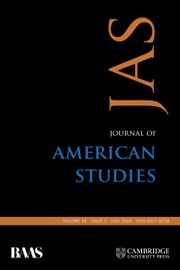In this “collective biography,” Brett Goodin takes a close look at the lives of three men who suffered the same fate in the early days of the American republic: Barbary captivity. Two of the men, James Leander Cathcart and Richard O'Brien, were captured by pirates within weeks of each other in 1785, and both of them ended up back in the Barbary states in the late 1790s as American consuls to the Barbary states. James Riley was captured in 1815 after suffering shipwreck off the coast of Morocco. Cathcart and O'Brien's captivity lasted eleven years; Riley's lasted only eleven weeks. But each of these men told his story in a way that emphasized both his masculinity and his beliefs about how the United States should relate to the Mediterranean world.
In chapter 1, Goodin explains how the three men learned from their maritime careers how to advocate for themselves and how to emphasize different parts of their history according to need. The history of Cathcart and O'Brien in particular is among the most important scholarly interventions of this book, and its nuances set these two men's actions as consuls into a whole different light.
Chapter 2 details how Cathcart and O'Brien used their writings to situate themselves and their captivity in orientalist terms. They both clung to American virtues of liberty and agency, and though they approached their own captivity in very different ways, they both also saw the Barbary states not just as Other, but as dangerous and hostile. In chapter 3, Goodin emphasizes that the journals and letters of these two men gave them entrance into the diplomatic networks of Europe and the United States, but only as informants, not as policy makers or changers. Both Cathcart and O'Brien believed that their correspondence provided valuable information, but they also tried to advise the government officials about how they should feel about what was happening, calling out to American virtue in distinction to European or Barbary virtue.
Chapter 4 takes up perhaps the best-known period of Cathcart and O'Brien's lives: their actions as consuls and then advisers in the Mediterranean before and during the First Barbary War. Goodin rightly notes that consuls are a vital part of American diplomacy who are often overlooked, and that these consuls had an impossible task of managing diplomatic crises with almost no intervention from the government in the United States. So it is hardly any wonder that O'Brien and Cathcart both made grievous mistakes and assumed too much authority on occasion. Neither Cathcart nor O'Brien reaped significant rewards from their service to the United States, so they both left their consulships with little to show for all their efforts.
Chapter 5 returns to James Riley. On the surface, his experiences seem similar to Cathcart's and O'Brien's, but in reality almost every part of his story was different, from the way he became a captive, to what happened to him during captivity, to what happened to him afterwards. But he also wrote a captivity narrative, which rose to moderate fame during his lifetime. Riley's story shows us larger trends within the nineteenth-century American narrative – his narrative moves away from the virtuous policy suggestions of Cathcart and O'Brien into a more ethnographic, scientific observation of his surroundings.
Chapter 6 closes out these men's lives by answering the question, what happened to them once they stopped being famous? Here, too, Goodin provides us with new insights about the complete lives of these nineteenth-century rugged individualists, who (as Goodin notes) spent much of their lives on the government payroll.
This book includes much important context for the lives of men who were important to the foreign relations of the early American republic. It is at its strongest when it discusses Cathcart and O'Brien; Riley's experience is so different that it seems disconnected from the broader story. However, if we think of this book as a collective biography, then perhaps the disconnect does not matter so much. This book serves as an important new addition to the literature on American relations with the Barbary states, on the early consular service, and on how solidly mediocre men sometimes get their fifteen minutes of fame in surprising ways.



